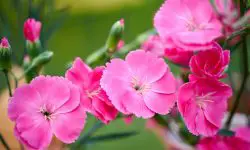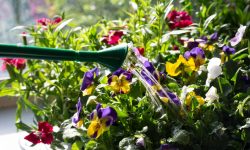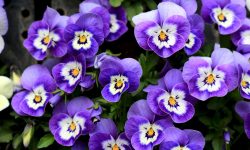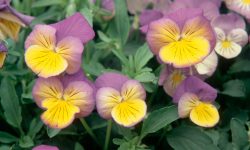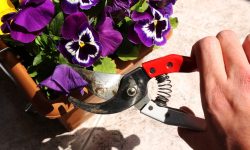Downy lobelia (Lobelia siphilitica) is a captivating perennial known for its striking blue or violet spikes that brighten gardens from late summer through fall. Its tall, elegant stems and vibrant hues create a soothing contrast against lush green foliage. More than just ornamental beauty, downy lobelia plays a vital role in attracting pollinators like bees, butterflies, and hummingbirds, bringing both color and life to your outdoor spaces.
Knowing when downy lobelia blooms is the secret to maintaining its vivid display for as long as possible. Blooming times vary with climate, soil moisture, and light exposure, but with the right care, these hardy plants can thrive beautifully each year. This guide will reveal how to time your planting, encourage longer blooming, and enjoy a garden bursting with vibrant lobelia color.
Understanding the Blooming Season of Downy Lobelia
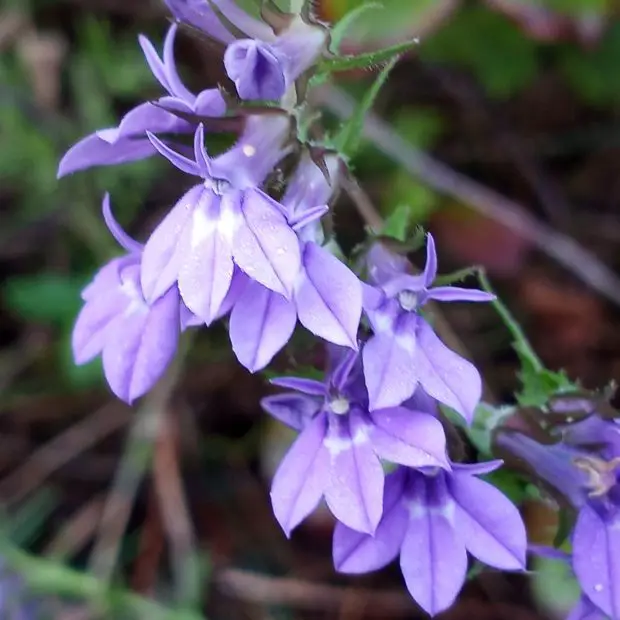
Downy lobelia is a late-summer to early-fall bloomer, typically showing its first vibrant flowers in mid to late July. The exact timing can vary depending on regional climate conditions, soil quality, and sunlight exposure. In cooler northern regions, blooming may start slightly later, often in August, whereas southern areas with warmer climates can see flowers as early as July. The duration of the bloom period generally lasts six to eight weeks, giving gardeners ample opportunity to enjoy its striking blue spikes.
Environmental factors play a significant role in the flowering schedule of downy lobelia. Consistent moisture, rich soil, and adequate sunlight help the plant reach its peak bloom. Shaded or dry conditions may delay flowering or reduce the number of blooms. Temperature fluctuations also influence the plant’s performance: cooler nights tend to prolong flower life, while extreme heat can shorten it. Understanding these factors allows gardeners to anticipate peak bloom times and adjust care practices for maximum visual impact.
Proper care throughout the growing season can also extend the flowering period. Deadheading spent blooms encourages the plant to produce more flowers rather than diverting energy into seed production. Fertilization with a balanced, low-nitrogen fertilizer promotes healthy growth without overstimulating leafy development at the expense of flowers. By monitoring environmental conditions, maintaining optimal soil moisture, and providing consistent care, gardeners can enjoy a prolonged display of downy lobelia, ensuring the garden remains vibrant and full of life well into fall.
Choosing the Right Location for Downy Lobelia
Selecting the ideal location is crucial for ensuring downy lobelia thrives and produces abundant, vibrant blooms. These perennials grow best in full sun to partial shade, ideally receiving at least four to six hours of direct sunlight daily. Full sun promotes robust growth, stronger stems, and more densely packed flower spikes. Partial shade can be beneficial in hotter climates, protecting plants from excessive heat that can cause wilting or premature fading of flowers. Proper sunlight exposure directly impacts bloom timing, flower size, and overall plant health, making location choice one of the most important steps for gardeners.
Soil conditions also play a vital role in location selection. Downy lobelia prefers rich, moist, well-draining soil with ample organic matter. Poorly drained areas, where water tends to pool, can lead to root rot and reduced flowering. Slightly elevated spots or garden beds with amended soil improve drainage and create favorable conditions for growth. Mulching around plants helps retain soil moisture, regulate temperature, and suppress weeds, which can compete for nutrients. Consistent soil moisture combined with good drainage encourages healthy root development and sustained flowering throughout the blooming season.
Environmental factors beyond sunlight and soil should also be considered. Avoid extremely windy areas that may damage tall flower spikes, and consider placing plants near natural windbreaks or companion plants for support. Proximity to pollinators like bees and butterflies enhances flower health and longevity. Observing local conditions, such as daily sun patterns and seasonal temperature fluctuations, allows gardeners to choose optimal planting sites. By thoughtfully selecting the right location, downy lobelia can reach its full potential, offering a long-lasting display of vibrant blue or violet flowers that enliven any garden space.
Factors Affecting Downy Lobelia Bloom
Climate and Temperature
Climate significantly impacts when and how downy lobelia blooms. These perennials thrive in temperate climates with moderate summer temperatures. In cooler regions, flowering may start later, and blooms tend to last longer due to the mild conditions. Conversely, hot and dry climates can trigger early flowering but may shorten bloom duration. Sudden temperature fluctuations, especially unexpected frosts or heat waves, can stress the plant, causing flowers to wilt prematurely. Gardeners should monitor local weather patterns and provide protection during extreme conditions to maintain healthy blooms.
Temperature also affects pollinator activity, which indirectly influences bloom quality. Cooler nights slow down plant metabolism, allowing flowers to remain vibrant for extended periods. During hot spells, plants may prioritize survival over flowering, reducing bloom size and quantity. Using shade cloths or planting near taller companion plants can moderate excessive heat and protect blooms. Understanding your region’s climate and adapting care practices accordingly, such as providing partial shade or mulching, helps downy lobelia reach its full blooming potential, offering a rich display of color throughout its flowering season. Consistent observation of temperature trends allows gardeners to anticipate flowering and adjust care for prolonged bloom success.
Sunlight Exposure
Sunlight is a crucial factor that strongly influences both bloom timing and flower intensity in downy lobelia. These plants thrive in full sun to partial shade, ideally receiving at least four to six hours of direct sunlight daily. Adequate light encourages stronger stems, richer flower colors, and a longer-lasting bloom period. Without sufficient sunlight, the plant may become leggy, produce smaller blossoms, and flower later than expected. Gardeners should observe daily sun patterns and position plants to maximize exposure while avoiding excessively hot afternoon rays.
Too much direct sunlight, especially combined with high temperatures, can stress the plant and cause premature wilting, faded blooms, and shortened flower life. To mitigate these effects, partial shade during the hottest parts of the day is beneficial, particularly in warmer climates. Strategically placing downy lobelia near taller plants or using temporary shading methods can protect the flowers while still providing adequate light for photosynthesis. Consistent monitoring of light conditions and adjusting plant placement as needed ensures healthier plants, stronger stems, and a continuous, vibrant flowering display. By understanding and optimizing sunlight exposure, gardeners can enjoy an extended bloom season with fuller, more colorful flowers.
Soil and Moisture
Soil quality and moisture levels are essential for promoting healthy growth and abundant blooms in downy lobelia. The plant prefers rich, well-draining soil that retains consistent moisture without becoming waterlogged. Poorly drained or overly dry soil can stunt flower production, reduce bloom duration, and weaken the root system. Maintaining proper soil moisture supports strong roots and encourages prolonged flowering, ensuring the plant reaches its full visual potential in the garden.
Regular watering is critical, especially during dry periods, but overwatering must be avoided to prevent root rot. Mulching around the base helps retain moisture, regulate soil temperature, and suppress weeds that compete for nutrients and water. Incorporating organic matter such as compost or leaf mold improves soil structure, promotes drainage, and provides nutrients for stronger growth. Gardeners should monitor soil conditions frequently, adjust watering schedules according to weather, and amend soil as needed. Proper soil and moisture management not only enhances bloom quality but also extends the flowering season, ensuring downy lobelia remains vibrant and healthy throughout summer and fall.
Extending the Downy Lobelia Blooming Season
Extending the bloom period of downy lobelia requires consistent care and attention throughout the growing season. One of the most effective strategies is deadheading spent flowers. Removing wilted or fading blooms prevents the plant from diverting energy into seed production. By focusing its energy on producing new flowers, the plant can sustain a continuous display of vibrant blue or violet spikes. Deadheading also improves air circulation around the plant, reducing the risk of fungal infections and promoting overall plant health.
Proper fertilization plays a key role in prolonging blooms. Using a balanced, low-nitrogen fertilizer encourages flower production rather than excessive leafy growth. Fertilize regularly according to label instructions, and consider supplementing with organic compost to enrich the soil naturally. Nutrient-rich soil supports stronger stems, more abundant flowers, and prolonged flowering. Overfertilization should be avoided, as it can lead to lush foliage at the expense of blossoms. Combining fertilization with consistent watering and proper sunlight ensures the plant maintains vibrant color and healthy blooms for an extended period.
Environmental adjustments can further help extend flowering. Planting downy lobelia in areas with partial shade during peak summer heat protects flowers from wilting. Mulching around the base helps retain soil moisture and regulate temperature, ensuring roots remain healthy and capable of supporting prolonged blooms. Additionally, monitoring for pests and diseases and removing affected plant parts promptly prevents stress that can shorten the flowering season. With these strategies, gardeners can enjoy downy lobelia’s brilliant flowers for several weeks longer, maximizing the visual impact in any garden setting.
Caring for Downy Lobelia During and After Bloom
Regular Watering
Consistent watering is crucial for sustaining downy lobelia blooms and overall plant health. These perennials thrive in consistently moist soil, yet they are highly sensitive to overwatering. During dry periods, it is important to water deeply, ensuring that moisture penetrates the root zone. Shallow watering encourages weak root systems and shorter bloom duration. Garden beds may need watering two to three times per week, while containers require daily attention, especially in hot or windy conditions. Monitoring soil moisture frequently allows gardeners to maintain the ideal balance for healthy growth and prolonged flowering.
Timing and technique also affect plant vitality. Watering early in the morning is best, as it allows leaves and flowers to dry before evening, reducing the risk of fungal infections and mold development. Mulching around the plant base can help retain soil moisture, regulate temperature, and prevent excessive evaporation. Adjusting watering schedules according to rainfall, seasonal temperature changes, and sunlight exposure ensures that downy lobelia remains hydrated and vibrant throughout the blooming period. Consistent watering promotes strong stems, fuller flowers, and longer-lasting color, maximizing the visual impact in any garden.
Fertilization
Fertilization is essential for supporting downy lobelia both during bloom and after flowering. A balanced, low-nitrogen fertilizer encourages vibrant flower production rather than excessive leafy growth. Fertilizing every four to six weeks provides necessary nutrients without overwhelming the plant. Organic amendments, such as compost or well-rotted manure, enhance soil fertility and improve moisture retention, contributing to stronger roots and more sustained flowering. Proper nutrition enables downy lobelia to maintain peak bloom performance, producing fuller spikes and richer coloration.
Post-bloom fertilization prepares plants for future growth and ensures resilience for the next season. Avoiding high nitrogen fertilizers is crucial, as too much nitrogen can lead to lush foliage at the expense of flowers. Combining careful feeding with consistent watering, adequate sunlight, and proper soil conditions ensures plants remain healthy and vigorous. Fertilized plants develop stronger stems, increased flower production, and a prolonged blooming period. By monitoring nutrient levels and supplementing as needed, gardeners can enjoy extended periods of brilliant blue or violet flowers while also setting the stage for next year’s successful growth.
Pruning and Maintenance
Pruning and maintenance are key to prolonging bloom life and ensuring overall plant health. After the flowering period, removing spent flower spikes prevents energy from being diverted into seed production, which can reduce subsequent flowering. Trimming damaged, diseased, or weak stems improves air circulation, reducing the risk of fungal infections and pest infestations. Regular pruning also encourages compact, sturdy growth, supporting the plant in producing more vibrant flowers during the next season.
Garden hygiene complements pruning efforts. Cleaning up fallen leaves, debris, and old mulch prevents the buildup of pathogens and helps maintain soil health. Light shaping of the plant after flowering keeps a neat appearance while encouraging future blooms. Maintaining these practices consistently allows downy lobelia to recover quickly after its initial flowering period, ensuring it remains robust, healthy, and capable of producing long-lasting, colorful displays for multiple seasons. Proper care during and after bloom strengthens roots and foliage, contributing to vibrant, sustainable garden beauty.
Seasonal Care Tips for Downy Lobelia
Proper seasonal care is essential for ensuring downy lobelia blooms consistently and remains healthy throughout the year. In spring, prepare garden beds by enriching soil with organic compost and ensuring proper drainage. Removing debris and old mulch promotes air circulation and reduces the risk of fungal diseases. Early pruning of dead or damaged stems encourages fresh growth and sets the stage for vibrant flowering. During this period, monitor soil moisture and ensure young plants receive consistent water to establish strong roots. Spring care forms the foundation for a healthy blooming season.
During summer, maintaining regular watering and fertilization becomes critical. Downy lobelia thrives in moist soil, so consistent hydration is necessary, especially during dry spells. Fertilize with a balanced, low-nitrogen fertilizer to support flower production rather than excessive foliage. Deadheading spent blooms encourages continued flowering and prevents energy from diverting into seed production. Mulching helps retain soil moisture, suppress weeds, and regulate root temperature, allowing flowers to reach their full potential even during high summer heat.
In autumn, attention shifts to preparing plants for cooler temperatures. Continue watering moderately and remove any remaining spent blooms to prevent disease. Cutting back older or damaged growth helps the plant conserve energy for the next season. If frost is expected, provide protection with frost cloths or temporary coverings. This seasonal approach ensures that downy lobelia recovers well, maintains strong roots, and is ready to bloom profusely the following spring. Consistent care across all seasons maximizes bloom longevity and overall plant health.
Common Problems That Affect Blooming
Pest Infestations
Pests can significantly reduce downy lobelia’s flowering potential. Aphids, slugs, and caterpillars are common offenders, feeding on leaves, stems, and flowers. Aphids suck sap from young growth, weakening the plant and causing distorted blooms. Slugs and caterpillars can chew holes through leaves and petals, directly damaging flowers and reducing visual appeal. Early detection is critical to prevent infestations from spreading. Inspect plants regularly, especially the undersides of leaves and near flower spikes, for signs of pests.
Controlling pests involves a combination of cultural and mechanical methods. Hand-picking larger pests, using barriers for slugs, or introducing beneficial insects like ladybugs for aphids can help minimize damage. Organic insecticidal soaps or neem oil sprays may also be effective if infestations persist. Maintaining plant health through proper watering, fertilization, and pruning reduces vulnerability to pests. Healthy, vigorous plants are better equipped to withstand minor attacks and continue blooming, ensuring that your garden retains vibrant color and continuous flower production.
Fungal and Bacterial Diseases
Fungal and bacterial infections can shorten bloom duration and damage downy lobelia foliage. Powdery mildew, leaf spots, and root rot are common issues caused by high humidity, poor air circulation, or overwatering. These diseases can cause leaves to yellow, flowers to wilt prematurely, and stems to weaken, all of which impact the plant’s ability to produce and maintain blooms. Early identification and treatment are crucial to prevent the spread and protect overall plant health.
Preventive measures include providing adequate spacing between plants, watering at the base rather than overhead, and removing infected foliage promptly. Mulching helps reduce soil splash, limiting the spread of pathogens. Using well-draining soil prevents waterlogged roots that encourage rot. Healthy, well-maintained plants are less susceptible to diseases and can sustain flowering longer. By combining vigilance with proper care, gardeners can minimize the effects of fungal and bacterial problems on bloom quality and duration.
Environmental Stress
Environmental stress, such as extreme heat, drought, or sudden cold snaps, can interfere with downy lobelia’s blooming cycle. Heat stress may cause flowers to wilt and fade prematurely, while drought conditions reduce bud formation and overall flower density. Unexpected frosts or temperature swings can damage emerging blooms or weaken the plant’s vitality, limiting subsequent flowering. Awareness of local weather patterns and timely protective measures can mitigate these stresses.
Gardeners can reduce environmental stress by providing adequate water during dry spells, using mulch to regulate soil temperature, and applying shade during peak heat. Temporary frost covers protect flowers during sudden cold nights. Maintaining consistent care and monitoring environmental conditions allows downy lobelia to recover quickly from stress, ensuring sustained flowering. By proactively managing environmental factors, gardeners can maintain longer bloom periods, vibrant colors, and strong, healthy plants throughout the growing season.
Companion Planting with Downy Lobelia
Companion planting can enhance both the beauty and health of downy lobelia. Selecting compatible plants nearby improves visual appeal while supporting pollinators that aid flowering. Plants with contrasting colors, such as yellow coreopsis or white astilbe, can make the vibrant blue or violet lobelia blooms stand out more prominently. Additionally, planting species with varying bloom times ensures continuous color in the garden as lobelia reaches its peak. Thoughtful arrangement not only creates an attractive garden design but also encourages beneficial insects like bees and butterflies to visit, improving pollination and flower longevity.
Choosing companions with similar growing requirements is essential for success. Downy lobelia prefers moist, well-draining soil and can tolerate partial shade. Pairing it with plants that demand similar conditions, such as cardinal flower, primrose, or turtlehead, helps maintain consistent care routines. These companions can provide natural support for lobelia stems while also attracting pollinators and providing seasonal interest. Avoid planting with species that require dry, sandy soil, as conflicting water needs can stress lobelia and reduce blooming potential.
Beyond aesthetics, companion planting also provides practical benefits. Taller plants positioned nearby can shield lobelia from harsh winds, preventing flower spikes from bending or breaking. Ground-cover plants help retain soil moisture and suppress weeds, reducing competition for nutrients. By carefully selecting compatible companions, gardeners can create a harmonious ecosystem that maximizes downy lobelia’s bloom potential, extends its flowering period, and enhances the overall health and vibrancy of the garden. Proper planning ensures lobelia thrives alongside its companions, producing long-lasting, eye-catching floral displays.
Propagating Downy Lobelia for Continuous Blooms
Propagating downy lobelia ensures a steady supply of vibrant flowers and extends the visual appeal of your garden. One common method is starting plants from seeds. Seeds can be sown indoors six to eight weeks before the last expected frost. Using a well-draining seed mix and keeping the soil consistently moist encourages successful germination. Seedlings require bright, indirect light and moderate temperatures to grow strong before transplanting outdoors. This method allows gardeners to plan bloom timing and stagger planting for continuous flowering throughout the season.
Division is another effective propagation technique for mature plants. In early spring or fall, established lobelia clumps can be carefully divided to produce multiple new plants. Each division should have a healthy root system and several shoots. After separating the clumps, replant them in well-prepared, moist soil, ensuring adequate spacing to promote healthy growth. Division not only produces additional plants but also rejuvenates older specimens, encouraging more vigorous flowering. Regularly propagating in this manner maintains a lush garden display year after year.
Maintaining proper care after propagation is crucial for ensuring continuous blooms. Newly planted seedlings or divisions require consistent watering, mulching, and protection from extreme temperatures. Fertilizing lightly supports root establishment and encourages early flower production. By combining seed propagation and division with attentive post-planting care, gardeners can enjoy a longer flowering season, creating an ever-changing, colorful display. Continuous propagation ensures that downy lobelia remains a vibrant focal point in the garden, providing sustained beauty and attracting pollinators throughout summer and fall.
Enhancing Garden Design with Downy Lobelia
Downy lobelia is a versatile plant that can elevate the visual appeal of any garden. Its vibrant blue or violet blooms create striking color contrasts when paired with complementary flowers such as yellow coreopsis, white alyssum, or soft pink geraniums. Using lobelia in borders, containers, or hanging baskets adds vertical interest and draws the eye to specific garden areas. Strategic placement allows gardeners to create focal points, highlight pathways, or frame larger shrubs and perennials, enhancing overall garden composition.
Combining lobelia with plants of varying heights and bloom times extends visual interest throughout the growing season. Taller companion plants provide support and shelter for delicate lobelia spikes while contributing layers to the garden design. Ground-cover companions retain soil moisture, suppress weeds, and provide a lush backdrop for lobelia flowers. Incorporating texture, foliage contrast, and seasonal blooms ensures the garden remains vibrant even as some plants finish flowering. Thoughtful arrangement not only maximizes beauty but also encourages pollinators to visit, supporting a healthy, balanced garden ecosystem.
Maintenance and seasonal adjustments further enhance garden design. Regular deadheading and pruning keep lobelia looking fresh and vibrant, preventing the display from appearing sparse or untidy. Containers can be moved to adapt to sunlight or highlight different areas of the garden, offering flexibility in design. By integrating downy lobelia thoughtfully with other plants and garden elements, gardeners can achieve a harmonious, dynamic, and colorful landscape. Its long-lasting blooms and rich hues make it an excellent choice for creating visually stunning and pollinator-friendly garden spaces.
FAQ About When Downy Lobelia Bloom
When do downy lobelia typically bloom?
Downy lobelia generally blooms from late spring through early fall, depending on climate and care. Cooler temperatures and consistent watering can extend the flowering period. Peak bloom often occurs in mid-summer when sunlight and soil moisture are optimal, producing vibrant, long-lasting flowers that enhance garden color.
How often should I water downy lobelia?
Downy lobelia prefers consistently moist soil but not waterlogged conditions. Water deeply two to three times per week during dry spells, adjusting frequency based on rainfall and temperature. Mulching helps retain moisture and prevents stress, promoting healthy growth and prolonged blooms throughout the season.
Can downy lobelia tolerate partial shade?
Yes, downy lobelia can tolerate partial shade, though full sun encourages more vigorous growth and denser flowering. In hotter climates, some afternoon shade protects the plant from wilting and fading flowers. Proper light balance ensures strong stems and vibrant bloom colors.
How do I prevent pests and diseases on lobelia?
Regular inspection, good air circulation, and proper watering reduce pest and disease risks. Remove damaged leaves, hand-pick slugs or caterpillars, and use organic treatments like neem oil for persistent issues. Healthy, well-maintained plants resist most fungal infections and insect damage.
What is the best way to propagate downy lobelia?
Downy lobelia can be propagated from seeds or by dividing mature clumps. Seeds started indoors produce strong seedlings for staggered blooms. Dividing established plants rejuvenates them and creates multiple new plants, ensuring continuous flowering and vibrant garden displays year after year.
Conclusion
Downy lobelia brings vibrant color and charm to any garden, rewarding attentive care with long-lasting blooms. Understanding its blooming season, proper watering, fertilization, and seasonal maintenance ensures healthy, abundant flowers. Companion planting and thoughtful placement enhance visual appeal and attract pollinators, supporting overall garden vitality. By addressing common challenges like pests, diseases, and environmental stress, gardeners can sustain continuous flowering and strong growth. Propagation through seeds or division allows for extended bloom periods. With consistent care and strategic planning, downy lobelia thrives, creating dynamic, eye-catching, and pollinator-friendly garden displays year after year.


